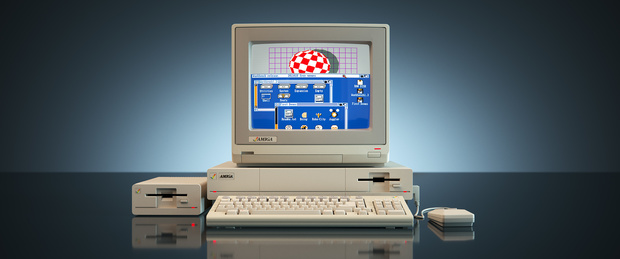It is Thursday, 30 years since the first Commodore Amiga came out: the Amiga 1000. This home computer released in the middle eighties, a lot of innovations in the field of multi-tasking, image and sound to the growing market for computers.
Commodore, the company acquired Amiga Corporation in 1984 and was thus a system in their hands that, while its origin in a gaming system had, but that the competition with Atari in the field of homecomputers could enter into. The resulting ‘Amiga from Commodore, later renamed Amiga 1000, got a great launch on the 23rd of July 1985 with a demonstration of Andy Warhol, images of singer Debbie Harry on the system is edited.
The subsequent production and sales were anything but prosperous. In the next few months knew Commodore there are only dozens to manufacture and when the production in november on steam, was late to the lucrative christmas period still to full advantage. In addition, it was the first Amiga was plagued by a buggy operating system. The real success for the Amiga came only with the cheaper Amiga 500, when there are more programs have appeared that use they could make of the advanced graphics capabilities of the system.
The Amiga 1000 had a Motorola 68000 cpu, which the pal version, which in Germany was made, on 7,09379 MHz ran. The computer had 256kB of ram, compared to 512kB for Amiga 500. In addition, there was 256kB Writable Control Store, in which the Kickstart-part of AmigaOS via floppy was loaded. Commodore was home to Kickstart at the later Amiga versions in rom, what the start times are significantly shortened. AmigaOS also consisted of the graphical Workbench user interface. One of the most vaunted features of AmigaOS was the ability to multitask, thanks to the Exec kernel.
An important piece of hardware was the Original Chip Set, consisting of a central Agnus chip and the Denise and Paula chips for respectively video and audio were responsible. The Amiga 1000 had a palette of 4096 colors, and a pal-resolution of 640×256 pixels or 640×512i in combination with an interlaced display, with use of 16 colors. The chipset could include different horizontal resolutions on the same screen display. The audio chip offered four 8bit-pcm-channels.
The Amiga was known as a home computer for games, but was also widely used by graphic designers and to make music with. In addition, there was a lively demo scene, around the system, which are the capacities to the limit and drove. In addition, the system for video editing, and animations used by television and film studios. The sales knew, however, never that of the Commodore 64 to emulate. In the long term was the Amiga overtaken by the rise of the pc, that Commodore is not a good answer. In 1994, fell to the canvas for Commodore, and thus for the Amiga, although AmigaOS is still being developed.
In the above video, only the 720p and 1080p version. For the 270p and 360p version for mobile devices, click here.
